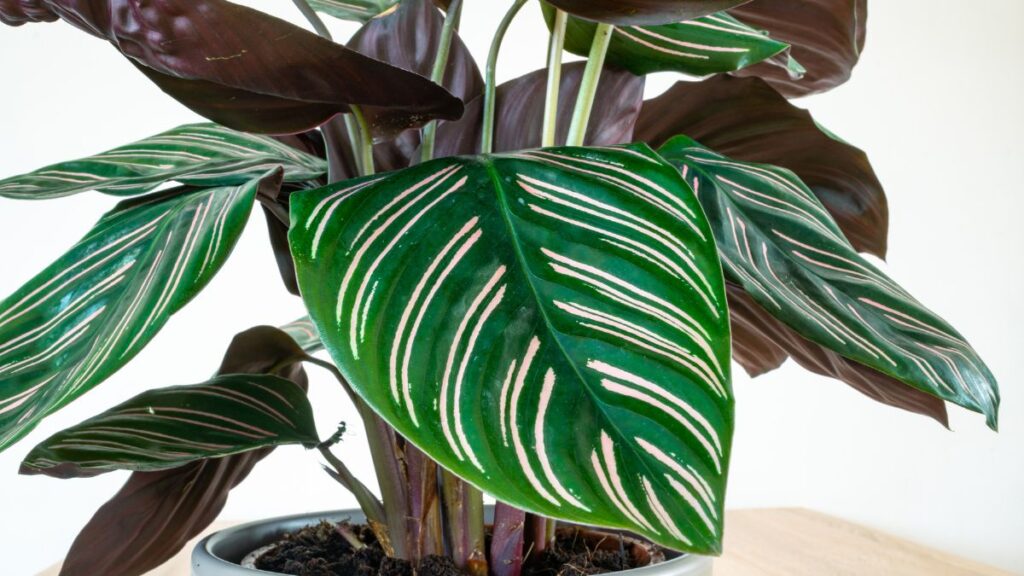Prayer plants, also known as Maranta, are a popular choice among indoor plant enthusiasts. There are several types of prayer plants, including the red prayer plant, green prayer plant, and the herringbone plant.
Each variety displays unique leaf patterns and colorations, making them visually appealing additions to any space. These plants are known for their ability to open and close their leaves in response to light, giving them their characteristic “prayer” appearance. Prayer plants are easy to care for and can thrive in low light conditions, making them ideal for homes and offices.
Whether you’re a beginner or experienced plant enthusiast, prayer plants are a versatile and attractive option for indoor gardening.
Introduction To Prayer Plants
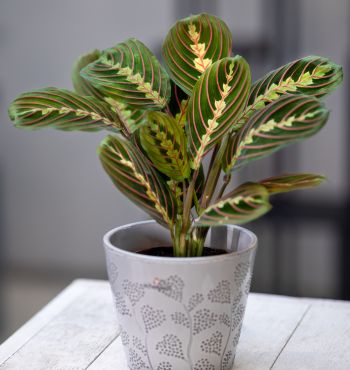
Prayer plants, also known as Maranta plants, are a popular choice for households and offices alike. With their stunning foliage and unique movements, they bring a touch of nature indoors. In this section, we will explore the different types of prayer plants, their characteristics, and why they are so beloved by plant enthusiasts and beginners alike.
What Are Prayer Plants?
Prayer plants, scientifically known as Maranta, are a group of evergreen, tropical plants known for their distinct, variegated leaves that fold up and down like hands in prayer. They belong to the Marantaceae family and are native to the rainforests of Central and South America. These plants are prized for their aesthetic appeal and their unique ability to move their leaves in response to light levels, giving them a dynamic and captivating appearance.
Why Are Prayer Plants Popular?
Prayer plants have gained popularity for several reasons. Their striking visual appearance sets them apart from other houseplants, making them a favorite among plant enthusiasts and interior designers. Additionally, their relatively low maintenance requirements and ability to thrive in low light conditions make them an ideal choice for beginners and those with busy schedules. Moreover, the captivating movement of their leaves adds an element of intrigue and liveliness to any space they inhabit.
Traditional Prayer Plant Varieties
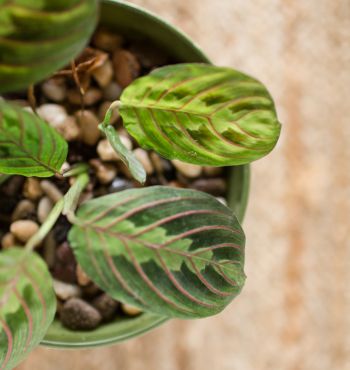
Traditional Prayer Plant varieties are esteemed for their remarkable foliage and unique characteristics, making them an ideal choice for indoor plant enthusiasts. These varieties possess distinctive patterns on their leaves that fold up at night, resembling hands in prayer. Let’s delve into the specific traditional varieties of prayer plants to discover their individual features and growth requirements.
Maranta Leuconeura
Maranta leuconeura, also known as the red prayer plant, is renowned for its striking red veins that run across its lush green leaves. This variety is an eye-catching addition to any indoor space and requires moderate to bright indirect light to thrive. It is important to keep the soil consistently moist, but not waterlogged, to maintain the health and vibrancy of the Maranta leuconeura.
Maranta Ramosissima
Maranta ramosissima, or the silver band prayer plant, captivates with its silver bands adorning its foliage, creating a mesmerizing visual appeal. This variety thrives in low to medium light conditions, making it an excellent choice for spaces with limited natural light. Similar to other prayer plants, it necessitates regular watering without allowing the soil to become waterlogged to ensure optimal growth.
Maranta Bicolor
Maranta bicolor, recognized for its distinctive feather-like patterns and contrasting hues, adds a touch of elegance to any indoor setting. This variety flourishes in moderate to bright indirect light and prefers consistently moist soil. By providing the appropriate light and watering conditions, the Maranta bicolor can thrive and continue to showcase its captivating foliage.
Calathea Prayer Plant Varieties
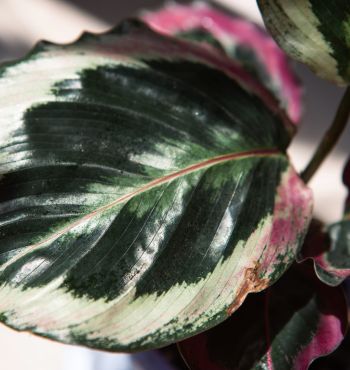
Discover the beautiful and diverse world of Calathea Prayer Plant varieties, with their stunning foliage and unique patterns. These types of Prayer Plants are perfect for adding a touch of natural elegance to any indoor space.
The Calathea genus is known for its stunning foliage and vibrant patterns, making it a popular choice among indoor plant enthusiasts. In this section, we will explore three captivating Calathea prayer plant varieties: Calathea orbifolia, Calathea lancifolia, and Calathea medallion.
Calathea Orbifolia
Calathea orbifolia, with its large and round leaves, is sure to catch your attention. Each leaf features a symmetrical pattern of bold stripes in varying shades of green. The contrast between the light and dark green tones creates a mesmerizing visual effect that adds character to any space. This variety is known for its impressive size, with mature leaves reaching up to 10 inches in width. Its broad leaves not only make it a stunning addition to your indoor garden but also contribute to its air-purifying qualities. Calathea orbifolia is adept at removing toxins from the air, making it an excellent choice for improving your indoor air quality.
Calathea Lancifolia
The Calathea lancifolia, also known as the rattlesnake plant, boasts elongated leaves with prominent dark green and light green patterns. The elongated shape of its leaves gives it a unique and eye-catching appearance, resembling the scales of a snake. This variety is particularly favored due to its resilience in low-light conditions, making it an ideal choice for those with less sunny spaces. The Calathea lancifolia thrives in indirect sunlight, making it the perfect addition to your office or bedroom.
Calathea Medallion
With its striking round leaves featuring intricate patterns of dark green spots on a vibrant light green background, the Calathea medallion is aptly named. The distinctive markings resemble a medallion or a piece of artwork, making this variety a true showstopper in any room. This variety is known for being slightly more compact than others in the Calathea genus, making it a perfect choice for those with limited space. Its compact size doesn’t compromise its beauty, as the Calathea medallion can still captivate anyone who lays eyes on it.
The Calathea genus offers a wide range of prayer plant varieties to suit any taste. Whether you prefer the symmetrical patterns of Calathea orbifolia, the intriguing snake-like appearance of Calathea lancifolia, or the captivating medallion-like leaves of Calathea medallion, these plants are sure to make a statement in your indoor garden. So go ahead and pick the Calathea prayer plant variety that speaks to you, and enjoy the beauty and tranquility they bring.
Stromanthe Prayer Plant Varieties
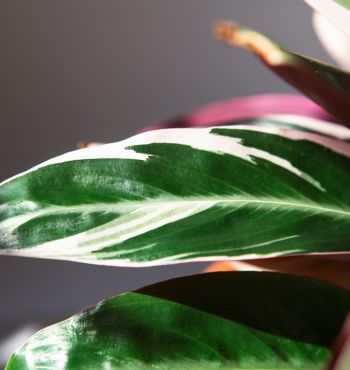
The Stromanthe Prayer Plant is a popular choice among plant enthusiasts, known for its stunning foliage and vibrant colors. There are several different varieties of Stromanthe Prayer Plants, each with its own unique characteristics and beauty. In this section, we will explore three captivating Stromanthe Prayer Plant varieties:
Stromanthe Sanguinea
Stromanthe sanguinea, also known as the Tricolor Prayer Plant, is a striking variety that features bold, variegated leaves with hues of green, cream, and pink. Its leaves are elongated and slightly wavy at the edges, adding a touch of elegance to any space. This variety thrives in bright, indirect light and prefers to be kept slightly moist. With its eye-catching foliage, the Stromanthe sanguinea is sure to be the center of attention in any room.
Stromanthe Thalia
Stromanthe thalia, commonly referred to as the Triostar Prayer Plant, is known for its mesmerizing tri-colored leaves that contain shades of green, white, and pink. Its leaves are broad and ovate, giving it a lush and tropical appearance. The Stromanthe thalia performs best in bright, indirect light and prefers to be watered when the top layer of its soil feels dry. This visually stunning variety will effortlessly add a touch of exotic beauty to any indoor space.
Stromanthe Amabilis
The Stromanthe amabilis, or more commonly known as the Calathea ‘Magic Star’, is a captivating Prayer Plant variety that boasts elongated, lance-shaped leaves with intricate patterns and stunning shades of green. These leaves exhibit a unique combination of dark green and lighter green patterns, resembling the markings of a starry night sky. The Stromanthe amabilis thrives in bright, indirect light and enjoys a regular watering schedule to maintain soil moisture. Adding this enchanting variety to your home will undoubtedly create a magical atmosphere.
Ctenanthe Prayer Plant Varieties

When it comes to prayer plants, the Ctenanthe varieties are a popular choice among plant enthusiasts. These stunning plants are known for their vibrant foliage and unique ability to fold their leaves at night, resembling hands in prayer. If you’re looking to add a touch of elegance and beauty to your indoor space, consider one of these three Ctenanthe varieties: Ctenanthe Lubbersiana
Ctenanthe lubbersiana, also known as the Bamburanta or Never-Never Plant, is a striking variety that features large, elongated leaves with deep green coloring. The underside of its leaves is a rich purple, adding a gorgeous contrast to any room. This variety thrives in bright, indirect light and prefers to be kept slightly moist. Its compact size makes it perfect for small spaces or as a beautiful addition to your plant collection.
Ctenanthe Burle-marxii
Ctenanthe burle-marxii, commonly known as the Fishbone Prayer Plant or Grey Star, is another captivating variety that will surely catch your attention. Its long, lance-shaped leaves are adorned with intricate patterns in shades of green, silver, and purple. This variety does well in medium to bright indirect light and prefers to be kept evenly moist. With its unique foliage, the Ctenanthe burle-marxii is sure to be a stunning focal point in any room.
Ctenanthe Oppenheimiana
Ctenanthe oppenheimiana, often referred to as the Tricolor Prayer Plant, is a true beauty with its stunning variegated foliage. The leaves are a mix of dark and light green with vibrant pink veins, creating a striking display. This variety thrives in bright, indirect light and prefers to be kept slightly moist. The Ctenanthe oppenheimiana adds an immediate pop of color and visual interest to any space, making it a popular choice for both beginners and experienced plant lovers alike.
How To Care For Prayer Plants
Proper care is crucial for the health and vibrancy of your prayer plants. From light and temperature needs to watering and soil requirements, providing the appropriate care is essential for these beautiful ornamental plants to thrive.
Light And Temperature Requirements
Prayer plants thrive in bright, indirect sunlight, so finding a well-lit spot away from direct rays is ideal for their growth. Maintaining a consistent temperature range of 65-75°F is also crucial for these plants to flourish.
Watering And Humidity
Watering: Keep the soil consistently moist but not waterlogged, and reduce watering in winter. Use distilled or filtered water to avoid harming the plant with chemicals found in tap water.
Humidity: Maintain a high humidity level by misting the leaves and placing a tray of water near the plant, especially during dry seasons.
Soil And Fertilizer
- Soil: Use well-draining potting mix with a combination of peat moss, perlite, and compost to provide ample aeration and drainage.
- Fertiliser: Feed your prayer plants with a balanced, water-soluble fertiliser once a month during the growing season to support healthy growth.
Common Issues With Prayer Plants
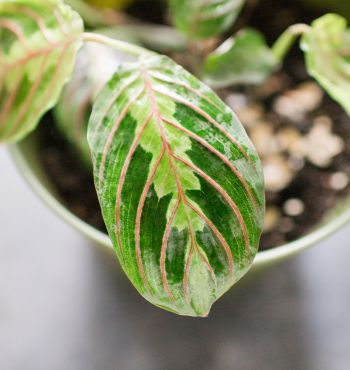
Yellowing Leaves
Yellowing leaves are a common issue with prayer plants and can be caused by overwatering or underwatering. Ensure that the soil is moist but not waterlogged, and consider adjusting your watering schedule accordingly. Additionally, inadequate lighting can also lead to yellowing leaves, so be sure to provide the plant with sufficient filtered sunlight.
Brown Leaf Tips
Brown leaf tips are often a sign of low humidity levels. Prayer plants thrive in high humidity environments, so consider using a humidifier or placing a shallow tray of water near the plant to increase moisture in the air. Additionally, avoid using water that contains high levels of fluoride, as this can also contribute to the browning of leaf tips.
Pests And Diseases
Prayer plants are susceptible to pests such as spider mites and aphids, as well as fungal diseases like root rot. Regularly inspect your plant for any signs of infestation or disease, and take appropriate measures to address the issue. This may involve using natural or chemical-based pest control methods, as well as adjusting watering practices to prevent fungal infections.
FAQ For Types Of Prayer Plants
What Are The Different Types Of Prayer Plants?
There are several types of prayer plants, including Maranta leuconeura, Maranta arundinacea, and Maranta tricolour.
How Do I Choose The Right Prayer Plant For My Home?
Consider the lighting conditions and humidity levels in your home, as different prayer plant species have varying requirements.
Can Prayer Plants Survive In Low-light Environments?
Yes, certain types of prayer plants, such as the Maranta leuconeura, thrive in low light conditions, making them ideal for indoor spaces with less sunlight.
Do Prayer Plants Require Any Special Care?
Prayer plants require regular watering, indirect sunlight, and a humid environment to thrive. It’s important to avoid overwatering or allowing the soil to dry out completely.
Can I Propagate Prayer Plants Easily?
Yes, prayer plants can be propagated through stem cuttings or by dividing the plant. With proper care, the cuttings or divided sections can establish roots and grow into new plants.
Conclusion
Prayer plants come in a variety of types, each showcasing its own unique characteristics and beauty. From the vibrant colors of the Maranta leuconeura erythroneura to the striking patterns of the Calathea orbifolia, these plants add a touch of elegance and tranquility to any space.
Whether you choose to incorporate them into your indoor garden or use them as statement pieces, prayer plants are sure to captivate and soothe the senses. Explore the different types and find the one that speaks to your style and taste.
